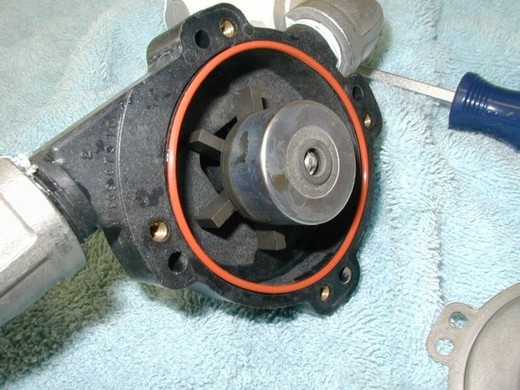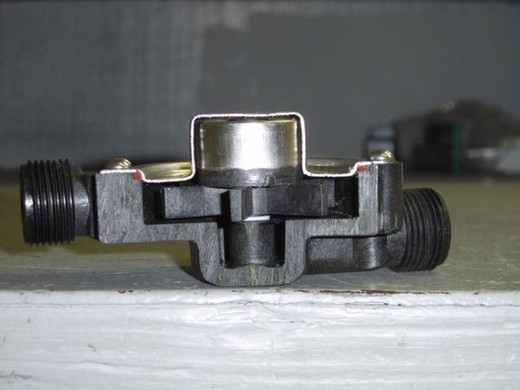Dry running is as exactly as it sounds, running the pump without liquid. Pumps should not be operated running dry.
When a pump is run dry, there are two common results.
1) The Impeller will Melt Along the Shaft, Causing the Impeller to Seize onto the Shaft
If the impeller seizes, it will stop and not rotate. To correct this, the pump should be taken apart and a drill bit should be used to clean out the bore of the impeller.

2) The Rear Housing may Melt
A hole may develop in the rear housing, allowing liquid to escape. Or, the boss of the rear housing, which secures the pump shaft, may become deformed, which will allow the shaft to move instead of remaining stationary.

This will cause damage to the impeller and may cause the shaft to break from the impeller bouncing on it. If the pump is made from stainless steel, it is unlikely holes will develop in the rear housing or that the boss will deform. What is likely to happen is the impeller bushing will seize onto the shaft.
The amount of time it takes for a pump to suffer damage from running dry depends on many variables.
Pump Size
Generally, the larger the pump with larger and heavier impellers, the faster it will be to suffer damage. You can search our pumps for the sizes we have available.
Bore Size
The bore size of the impeller can also be a factor. The more clearance between the bore of the impeller and the shaft, the more time you will have before suffering damage. Polypropylene will suffer damage quicker than Kynar on the same model, and stainless steel will take more time than plastic.
Liquid Used in the Pump
Another factor is the liquid previously in the pump. If the liquid is ambient or cooler, it will take more time for the pump to suffer damage after it starts to run dry than if the liquid is warmer.
Safe Options for Dry Pumping
If you are using the pump for tank transfer and want to empty the tank, this may mean running the pump dry for a few seconds. If the pump is run dry for less than 45-60 seconds, the pump should not suffer damage. Anytime you are aware that the pump may have to be run dry to empty the tank, the operator must take care to ensure the pump is run dry for the absolute minimum amount of time. Any pump that suffers from running dry is not covered by warranty.
Dry running can be an expensive hazard on your equipment but with care and supervision, you can elongate the life of your machinery. Learn more about our maintenance best practices by contacting us.
